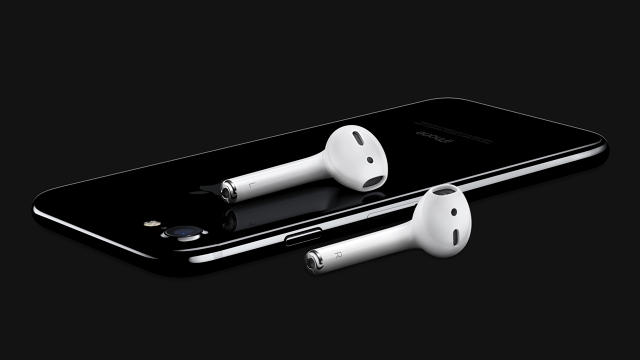iPhone 7: To Upgrade Or Not? It’s A Harder Question Than We Thought
Maybe you had to be there. Maybe not. But when I attended Apple’s event in San Francisco today, the new iPhone 7 line looked a lot better than the leaked specs had us believing it would—especially the iPhone 7 Plus.
So the question we ask with every new phone release—should I upgrade?—is more complicated this time. When the iPhone 6s appeared last year, I had no trouble advising people to get by without 3D Touch and Live Photos, and wait another year to buy.
But this year is different, and I’m not the only one who thinks so. “Internally they have put a lot of interesting things in there,” IDC analyst Tom Mainelli told me after Apple’s press event. “I think if somebody was on the fence, I would have no problem advising them to upgrade.”
The new phones offer an impressive lineup of upgrades, and a couple of entirely new component features. Some of them aren’t game changers, like the new water-resistance rating or the new haptic-touch home button. Those things alone aren’t likely to sway someone’s decision to upgrade. But other things, like the multiple improvements to the cameras on both the iPhone 7 and iPhone 7 Plus, might make a big difference. Smartphone photography is a big, big deal, and, judging by the specs and features, Apple could have the best smartphone camera out there, in a market with an awful lot of impressive smartphone cameras. Of course, we’ll test that when we can.
Both phones use a wider f1.8 aperture lens, which lets in a lot more light. Both have optical image stabilization to steady your hands. (Previously, that was a Plus feature only.) The combination of those two things alone will go a long way to remove the graininess from your shots, especially in low-light situations, an Apple rep explained to me. The new ambient light sensors also help improve low-light shots. Both phones now have four LED camera flashes instead of two. Apple’s image signal processor uses AI to recognize people and objects to adjust camera settings. It performs a hundred billion computations in 25 milliseconds for every shot, Apple said.
Only the iPhone 7 Plus has the dual 12-megapixel lenses (one wide angle and one telephoto) that will probably take zoom (usually a bad experience on smartphones) to another level. When you zoom to 2X, it’s all real optical zoom. As you zoom in farther than that, it’s software zoom, but the software zoom looks far better, having started with real optical zoom.

Actually, as great as the dual-lens features are, the fact that they’re only available on the iPhone Plus will put them out of reach for a great many would-be iPhone 7 buyers. “The camera enhancements were nice, but you only get the telephoto and new portrait mode ‘bokeh’ benefits if you purchase the more expensive iPhone 7 Plus,” said TECHnalysis president Bob O’Donnell. “I’m not sure people will be willing to make the upgrade just for that, especially if they lose a headphone jack in the process.”
And some people may want the camera benefits but won’t want to carry around a Plus-sized phone. Perhaps building a dual-lens camera into a 4.7-inch screened phone is an engineering feat that Apple can’t yet quite manage.
The iPhone 7 and iPhone 7 Plus both got new quad-core A10 Fusion processors, which Apple says make the phones 40% faster than their predecessors, the iPhone 6s and 6s Plus. They also get with the times by doing away with the 16 GB and 64 GB memory options, going up to 32 GB, 128 GB, and 256 GB options. These upgrades are table stakes; you expect them when you’re shelling out the money to upgrade to this year’s model.
Then there’s the missing headphone jack. I’d argue that that’s a deal breaker for just a minority of Apple users. The truth is Apple’s Phil Schiller, in his presentation at Apple’s event today, took most of the steam out of the big protest against the removal of the 3.5 mm headphone jack and the movement toward all-digital audio. The messaging was just about perfect.

Apple covered itself on the front end and the back end here. It showed people what a future with highly functioning wireless digital earphones looks like with its new $160 AirPods. It covered the back end by making the earphones that come in the box with the iPhone 7 connect with a Lightning cable, and included a dongle to allow people to use their old analog headphones for another year. It’s just the future, and Apple isn’t even really on the cutting edge of it. Other phones, including Lenovo’s Moto Z, have already hit the market sans 3.5 mm jack.
And to make the decision even harder, Apple decided to make the new iPhone 7 cost exactly as much as last year’s iPhone 6s.
In the end it may come down to the question of how important the new camera technology is to a perspective buyer. For some people, jittery, blurry, grainy, pixilated photos are a real buzzkill. For them, especially if they’re among the millions who have yet to upgrade to the iPhone 6 line, the iPhone 7 will be very tempting indeed. For those who want a phablet, even more so.
For people like me who already have an iPhone 6s, or an iPhone 6 for that matter, it’s a toss-up. And then again it comes down to the importance of the camera. I personally am disappointed in the quality of the photos I shoot with my iPhone 6s, especially in low light. And now that I’ve seen an Apple device that probably defeats those issues convincingly, well, I may be headed for the Apple Store once again.
Fast Company , Read Full Story
(36)














